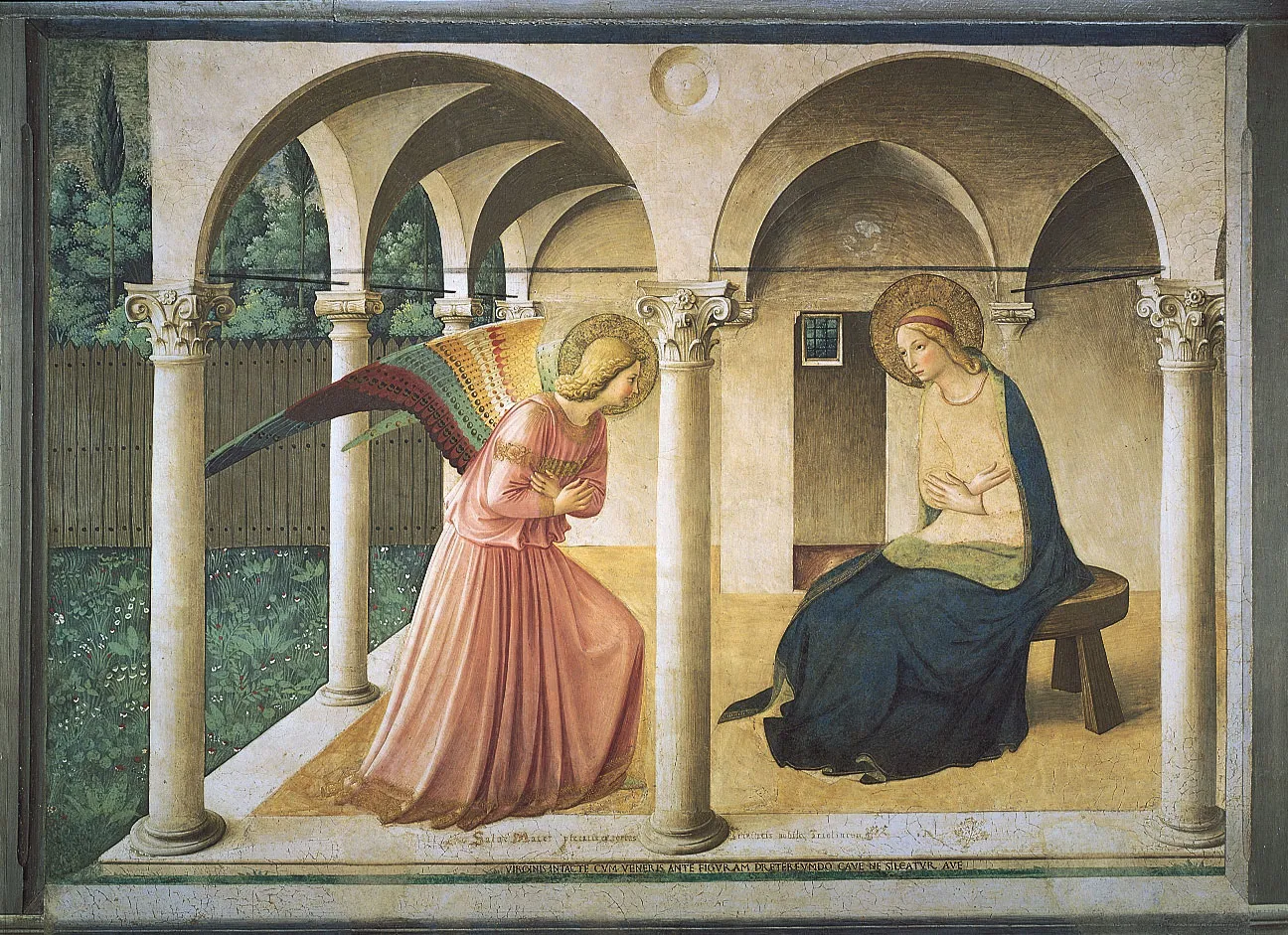“Imaginative prayer” or “Ignatian contemplation” is a unique way of praying that enlists the help of our senses and imagination.
In contemplation, we engage our five senses to “enter” a Gospel scene—seeing, hearing, and feeling the moment. This allows us to have a “spiritual conversation” with Jesus and the characters, speaking and listening “heart to heart,” like St. Ignatius of Loyola suggests, “as one friend speaks to another.”
St. Ignatius encourages us to approach prayer like a good movie director–we start with the wide angle and then zoom in on the key figures—reflecting on their faces and hearts. Ignatius outlines several steps to help us contemplate Jesus in the Scriptures.
“Pray as though everything depended on God. Work as though everything depended on you.” –St. Ignatius of Loyola
The Value of Ignatian Contemplation
Why pray this way? First our Catholic faith teaches that we can speak with the saints in prayer, and they with us.
Ignatian contemplation helps us to see, hear, and walk with them, reminding us that the saints are real people who experience emotions like we do.
Second, reflecting on a Gospel passage this way reveals new details and graces. When we pray this way, each person receives different graces from the same passage because the Lord knows our hearts.
Loving this prayer guide? Know others who could use some help with their prayer life? Check out our guides on the Rosary, intercessory prayer, the Consecration to St. Joseph, and Lectio Divina.
How to Pray Using Ignatian Contemplation
We can use our imagination to connect with Jesus, Mary, and the disciples in the Gospels on a deeper, personal level.
Let’s try out Ignatian contemplation by looking at the Annunciation, where the angel Gabriel speaks to Mary. Start by reading the passage from Luke below.
Luke 1:26–38
“26 In the sixth month the angel Gabriel was sent by God to a town in Galilee called Nazareth, 27 to a virgin engaged to a man whose name was Joseph, of the house of David. The virgin’s name was Mary. 28 And he came to her and said, “Greetings, favored one! The Lord is with you.” 29 But she was much perplexed by his words and pondered what sort of greeting this might be. 30 The angel said to her, “Do not be afraid, Mary, for you have found favor with God. 31 And now, you will conceive in your womb and bear a son, and you will name him Jesus. 32 He will be great, and will be called the Son of the Most High, and the Lord God will give to him the throne of his ancestor David. 33 He will reign over the house of Jacob forever, and of his kingdom there will be no end.” 34 Mary said to the angel, “How can this be, since I am a virgin?” [b] 35 The angel said to her, “The Holy Spirit will come upon you, and the power of the Most High will overshadow you; therefore the child to be born[c] will be holy; he will be called Son of God. 36 And now, your relative Elizabeth in her old age has also conceived a son; and this is the sixth month for her who was said to be barren. 37 For nothing will be impossible with God.” 38 Then Mary said, “Here am I, the servant of the Lord; let it be with me according to your word.” Then the angel departed from her.”

Walking Through Ignatian Contemplation
Let’s try it out by using our sense of sight.
Is it day or night? St. Luke doesn’t specify, but many artists depict the Annunciation at night, perhaps while Mary was praying or resting. Picture Mary at home, in Nazareth, where the days are hot and sunny, and the nights are cool and breezy. Can you imagine the smell of dust, a breeze, or candles burning?
Now, think of Mary’s appearance. She is young, engaged to be married. Imagine her face and emotions as she encounters the angel—troubled and pondering. She asks, “How can this be?” The angel reassures her, “Do not be afraid, Mary.”
Though overwhelmed, Mary accepts her role, recalling God’s promises and the psalms she’s prayed: “The Lord is my shepherd.” With a tear, she says, “Yes. Let it be done to me according to your word.”
At that moment, God takes on human flesh in Mary’s womb. His heart begins to beat beneath hers, offering his Sacred Heart to humanity.
St. Ignatius asks us to reflect: How do I feel reading this passage? Have I ever felt called by God? Engage in a personal conversation with Mary or Jesus. What would you ask, and what might they say to you? Take a moment to reflect or write down your thoughts.
Ready to get into a rhythm with your prayer life? Check out our blog on creating a daily prayer routine to get started.
Additional Resources
Ready to start praying using Ignatian Contemplation? Sign up for daily Ignatian reflections via the Magis Center to make your daily prayer easier and more fruitful.
Listen to Sr. Bethany Madonna share the significance of prayer in our relationship with God in her keynote talk here!
Reminder, registration for SEEK25 is now open! We’re ready to pray with you in person next January in Washington, D.C., and Salt Lake City!
For more formational content, check out our blog, FOCUS Equip, or listen to previous SEEK talks on our podcast, here.
